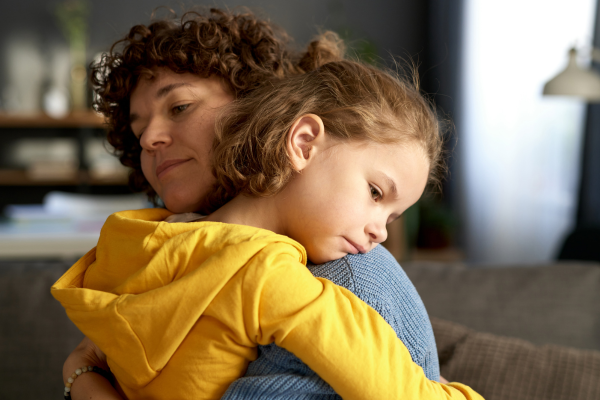Divorce is a life-changing event not just for you, but for your children as well. Regardless of their age, kids experience a wide range of emotions when their parents separate, including confusion, sadness, anger, and even guilt. As a parent, you play a crucial role in helping them navigate this difficult transition.
This guide will help you support your children emotionally, provide stability, and foster healthy coping mechanisms during and after divorce.
1. Open and Honest Communication
Talk to Them in an Age-Appropriate Way
Children don’t need to hear every detail about why you’re getting divorced, but they do need honesty. Use simple, clear language to explain the situation based on their age and maturity level.
- For young children (ages 3-7): “Mommy and Daddy are going to live in different houses, but we both love you very much.”
- For older children (ages 8-12): “We’ve been having problems, and we’ve decided that it’s best to live apart. But we are still your parents, and that will never change.”
- For teenagers (ages 13+): They may already have suspicions. Be honest, but avoid badmouthing the other parent. “We’ve tried to make things work, but we’ve decided to separate. It’s not your fault, and we will always be here for you.”
Reassure Them That It’s Not Their Fault
Many children, especially younger ones, assume they are to blame for their parents’ divorce. Remind them often:
- “This is between Mom and Dad.”
- “You didn’t do anything wrong.”
- “We both love you just the same.”
2. Maintain Stability and Routine
Children thrive on stability, and divorce can disrupt their sense of security. Try to keep their daily routines as normal as possible.
- Stick to Consistent Schedules: If they have set bedtime routines, homework time, or extracurricular activities, keep those intact.
- Minimize Major Life Changes: If possible, avoid moving schools or making drastic changes right away.
- Provide Predictability in Co-Parenting: Use a shared calendar or a parenting app to ensure kids know when they’ll see each parent.
3. Encourage Healthy Emotional Expression
It’s natural for children to feel sadness, frustration, or even fear about the changes ahead. Help them express their emotions in a healthy way.
- Validate Their Feelings: Let them know it’s okay to be sad or confused. Say things like, “I understand that this is hard for you. It’s okay to feel upset.”
- Encourage Open Conversations: Let them ask questions and answer them honestly.
- Provide Outlets for Expression: Art, journaling, or sports can be great ways for children to process emotions.
Warning signs to watch for: If your child becomes withdrawn, starts acting out, or has trouble sleeping, they may need additional emotional support.
4. Avoid Putting Kids in the Middle
Divorce is between you and your ex, not your children. Shielding them from conflict will make their adjustment much easier.
- Don’t badmouth the other parent. Saying negative things about your ex can create stress and make children feel like they have to “choose sides.”
- Don’t use them as messengers. Avoid making them deliver messages like, “Tell your dad he still owes me child support.”
- Don’t ask them to spy or take sides. Let them have a relationship with both parents without interference.
Instead, encourage a respectful co-parenting relationship and reassure your children that they can love both parents.
5. Seek Outside Support When Needed
Some children will struggle more than others. If your child is having a particularly hard time adjusting, consider seeking professional help.
- Family therapists can help children process emotions.
- School counselors can provide extra support.
- Divorce support groups for kids can show them they’re not alone.
If you notice behavioral changes like trouble in school, withdrawal from friends, or extreme mood swings, don’t hesitate to reach out for help.
6. Foster a Positive Co-Parenting Relationship
Even if you and your ex have differences, maintaining a united front when it comes to parenting will help your children adjust.
- Be civil and cooperative. Work together to make decisions about schooling, medical care, and extracurricular activities.
- Keep both parents involved. Encourage phone calls, visits, and shared activities with both parents.
- Use technology for smoother co-parenting. Parenting apps like OurFamilyWizard or TalkingParents can help keep schedules and communication organized.
Your children will benefit from seeing you both prioritize their well-being over any conflicts.
Final Thoughts: Putting Your Children First
Divorce is a challenging experience for kids, but with patience, love, and consistency, they can adjust in a healthy way. The key is to reassure them of your unconditional love, keep communication open, and maintain as much stability as possible.
Remember: Your children’s emotional well-being comes first. The way you handle this transition will shape how they process change, relationships, and resilience in the future.
If you’re struggling with co-parenting or need guidance, consider speaking with a family therapist or mediator to ensure you’re providing the best possible environment for your children.





